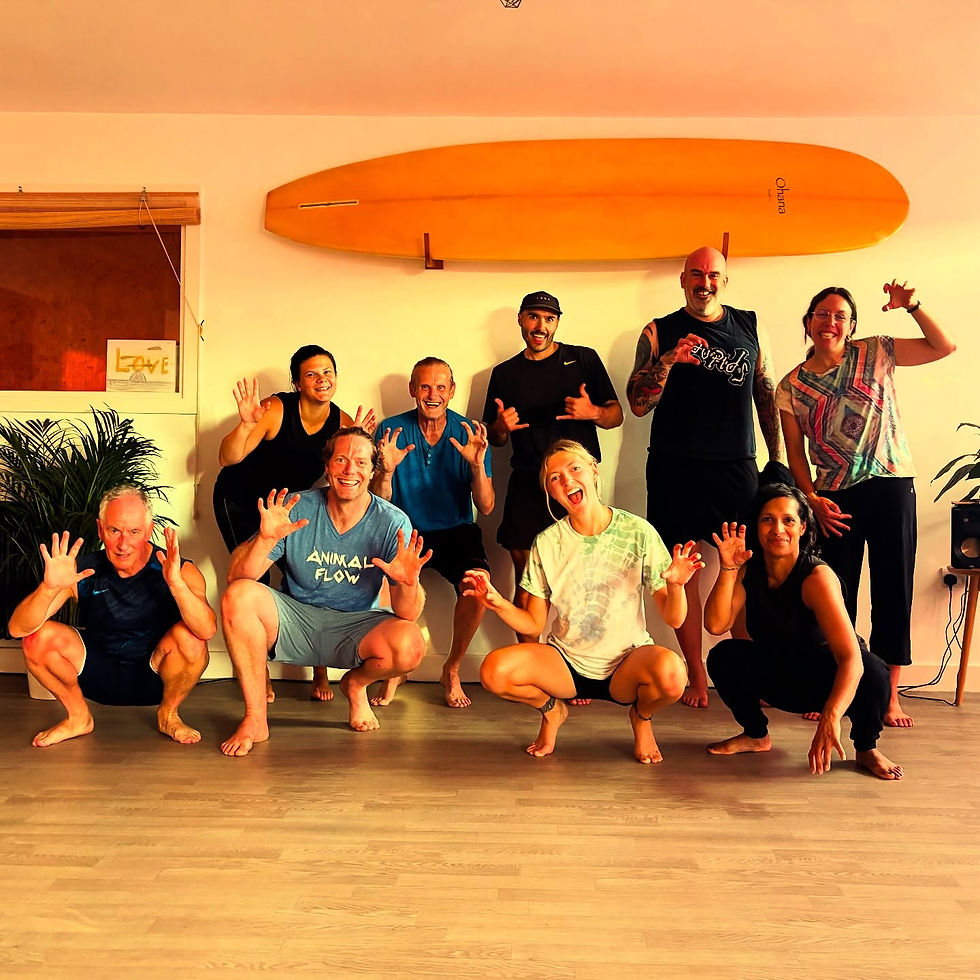Embracing the Seasonal Shifts: A Guide to the Spring Equinox, Summer Solstice, Autumn Equinox, and Winter Solstice
- Nicola - Shore Yoga
- Jun 20
- 4 min read

The seasons play an essential role in our lives, influencing our moods, energy levels, and connection to nature. At each turn of the year, the Spring Equinox, Summer Solstice, Autumn Equinox, and Winter Solstice bring unique energies that we can tune into for greater alignment and growth. These moments in the calendar are not just shifts in weather but are deeply rooted in ancient traditions and offer opportunities to reflect, set intentions, and practice mindfulness. Let’s take a closer look at these four pivotal points in the year and how we can honour them with our yoga and daily practices.
Spring Equinox: A Time for Renewal and Rebirth (Around March 20th)
The Spring Equinox marks a moment of balance—when the length of day and night are equal. Symbolically, this is the perfect time for new beginnings, growth, and renewal. It’s a time when nature begins to awaken after the stillness of winter, and so can we.
Yoga Practices for the Spring Equinox:
Rejuvenating Poses: Focus on poses that open the chest and hips, like Camel Pose (Ustrasana) and Wheel Pose (Urdhva Dhanurasana), to invite energy and vitality into the body.
Breathwork: Try alternate nostril breathing (Nadi Shodhana) to balance the energies within and around you.
Set Intentions: The Spring Equinox is a powerful time to plant seeds—physically, mentally, and emotionally. Use this time to set goals and intentions for the coming months.
Activities to Celebrate:
Take a walk in nature and notice the budding flowers and the return of the sun.
Create a vision board or journal your goals for growth in all areas of your life.

Summer Solstice: The Peak of Light and Energy (Around June 21st)
The Summer Solstice is the longest day of the year, and it’s all about celebrating light, vitality, and abundance. It’s a time to step into your fullest power and embrace the vibrant energy around you. This is a season of action, play, and expression.
Yoga Practices for the Summer Solstice:
Strength and Openness: Incorporate Warrior poses (Virabhadrasana I, II, III) to build strength and stability, and Backbends like Cobra Pose (Bhujangasana) and Bridge Pose (Setu Bandhasana) to open the chest and heart.
Sun Salutations (Surya Namaskar): Perform a few rounds of Sun Salutations in the morning to honour the sun’s peak energy.
Meditation: Try a guided meditation focusing on light and growth, or practice visualising abundance and vitality flowing into your life.
Activities to Celebrate:
Spend the day outdoors—whether that’s at the beach, in a garden, or on a hike—to bask in the sunshine.
Host a summer gathering with loved ones to celebrate the beauty of life and connection.

Autumn Equinox: A Time for Balance and Reflection (Around September 23rd)
The Autumn Equinox marks the transition from the fiery energy of summer to the more introspective energy of autumn. Just like the Spring Equinox, day and night are equal, but this is a time of harvesting the fruits of our labour. We also begin to look inward and prepare for the quieter months ahead.
Yoga Practices for the Autumn Equinox:
Grounding Poses: Focus on grounding poses like Tree Pose (Vrksasana) and Mountain Pose (Tadasana) to connect with the earth and bring balance to the body.
Forward Folds: Try Seated Forward Fold (Paschimottanasana) and Standing Forward Fold (Uttanasana) to release tension and invite reflection.
Breathwork: Deep belly breathing can help you focus on letting go of what no longer serves you and creating space for new energy.
Activities to Celebrate:
Take a moment to reflect on the harvest of your own life—what have you accomplished, and what do you want to release?
Enjoy seasonal foods like squash, apples, and root vegetables, and embrace the comforting energy of the season.

Winter Solstice: A Time for Rest and Renewal (Around December 21st)
The Winter Solstice represents the shortest day and longest night of the year, a time when the darkness begins to give way to the return of light. Symbolically, this is a period of rest, reflection, and renewal. It’s a chance to slow down, recharge, and reconnect with the quieter rhythms of life.
Yoga Practices for the Winter Solstice:
Restorative Poses: Choose restorative poses like Child’s Pose (Balasana), Legs Up the Wall (Viparita Karani), and Supta Baddha Konasana to foster deep relaxation and rejuvenation.
Twists: Incorporate gentle twists like Supine Twist (Supta Matsyendrasana) to release tension and create space for new beginnings.
Meditation: Use the solstice to reflect on the past year, release what’s no longer needed, and set intentions for the coming months.
Activities to Celebrate:
Create a cosy atmosphere—perhaps with candles or soft lights—and practice mindfulness or meditation.
Take time for self-care, rest, and connection with loved ones, embracing the quiet and stillness of winter.
How to Incorporate Seasonal Shifts into Your Practice
By aligning your yoga practice and daily life with the changing seasons, you can harmonise your energy and intentions with nature’s cycles. Whether it’s welcoming the renewal of spring, celebrating the fullness of summer, embracing reflection in autumn, or honouring rest during winter, the shifts in the seasons offer a perfect opportunity for growth and renewal in every area of your life.
At Shore Yoga, we love to celebrate these shifts with special seasonal events, rituals, and mindful practices that help you stay connected to nature’s rhythm. Let the seasons guide you in your practice and life, helping you stay balanced, grounded, and aligned.
Conclusion: Each of the four seasonal milestones—Spring Equinox, Summer Solstice, Autumn Equinox, and Winter Solstice—offers a unique opportunity to reflect, reset, and align our intentions with the natural flow of the year. Incorporating these transitions into your yoga and mindfulness practices can create a deeper sense of connection to yourself and the world around you.
What seasonal practice are you most excited to explore? Let us know in the comments below!




Comments